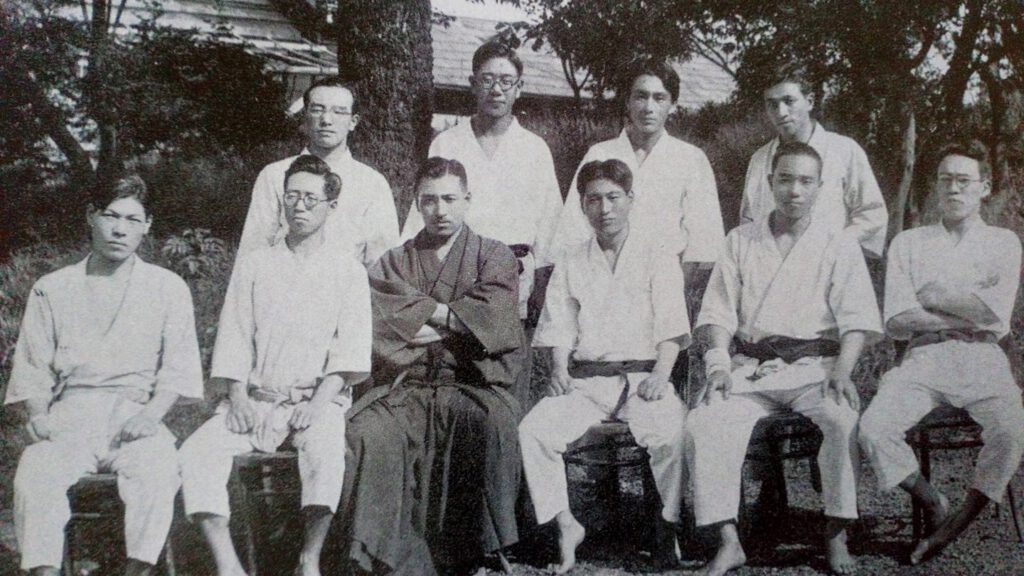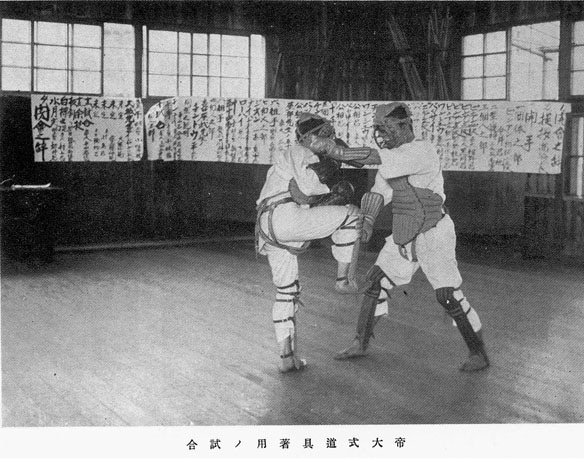According to data published by Nakamura Akira of the Karate Section of the Okinawa Tourism Bureau, a certain HIRAYAMA Kazuo from Tokyo Imperial University taught karate in Germany 1931 – 1933.
HIRAYAMA Kazuo (1908–1990) is listed at the “Deutsche Institut für Ausländer an der Universität Berlin“ (DIA; German Institute for Foreigners at Berlin University) as follws (Hartmann 2003:39; translation: Quast):
HIRAYAMA Kazuo 平山一雄 (1908–1990): DIA, entry date of June 11, 1931 / Political science / Apostel-Paulus-Str. 4, at Mrs. Aminski; VS, Summer semester 1932 to winter semester 1933/34, Nr. 4845 / Political Science / W 30, Schwäbische Str. 24 / Jurist, civil lawyer; Professor at Fukuoka University, author of Minpō kōgi (Lectures on Civil Law).
According to it, HIRAYAMA studied political science in Berlin between from summersemester 1932 to wintersemster 1933/34. He became a jurst and civil lawyer and later served as Professor of Law at Fukuoka University. According to the name directory of the 70 Year History of the Karate Club of Tokyo Imperial University, Hirayama Kazuo graduated there in 1931. So he might have left for Germany in 1931 at earliest, started summersemster of 1932, and finished his studies in Berlin at the end of the wintersemster in 1934.
What kind of karate was that at the time?
Funakoshi Gichin was a teacher at the Karate Club of Tokyo Imperial University. However, there was problem. Members of the club were interested in free kumite since at least 1926 and also visited Okinawa in the summer of 1929 for kata and kobudo research and it is also said that they tested karate in the streets and red light districts. On May 10, 1930, the Karate Club of Tokyo Imperial University held a spring karate demonstration which inlcuded kumite matches with protective gear (see article by Motobu Naoki Sensei here).
Bō Hideo (who joined the karate club in 1927) also stated the following in his “Memorandum of My Introduction to Karate-dō” (see article by Motobi Naoki Sensei here)
I remember that Shihan Funakoshi’s instruction consisted of various kata, starting with “Pinan” Shodan, kumite (today’s yakusoku kumite), makiwara thrusts, and other basic movements. It was strictly forbidden to engage in any kind of randori practice (today’s jiyū kumite).
Funakoshi opposed most of these developments and withdrew from his teacher position a Tokyo Imperial University.
So what was the style of karate taught by HIRAYAMA in Germany? According to the above, it was a style of karate developed in the Karate Club of Tokyo Imperial University since the mid 1920s. And while it had elements such as kata that were taught by Funakoshi, it also had elements which were simply ideas about what karate is or should be that were contrary to Funakoshi’s ideas. So one could say that it was a form of karate that was appropriated, a karate that was adapted to and mixed with the needs, ideas, and experiences of the younger people involved. This might or might not be a definition of “Shotokan karate.”
Biblio:
- Hartmann, Rudolf: Japanische Studenten an der Berliner Universität, 1920 – 1945. Kleine Reihe 22, Mori-Ōgai-Gedenkstätte der Humboldt-Universität zu Berlin, 2003.
- Miki Jisaburō and Takada Mizuho, Introduction to Kenpō, Karate Study Association of Tokyo Imperial University, 1930.
- Motobu Naoki: Repercussions of Yabu Kentsū. 2021-03-21
- Motobu Naoki: Kumite of the University of Tokyo. 2021-03-28
- Motobu Naoki: Imperial University Style Karate-Kenpō Match. 2021-04-03
- Private info received from Motobu Naoki Sensei.
- Public info by Ben Pollock and Thomas Feldmann on Facebook.
© 2021, Andreas Quast. All rights reserved.



